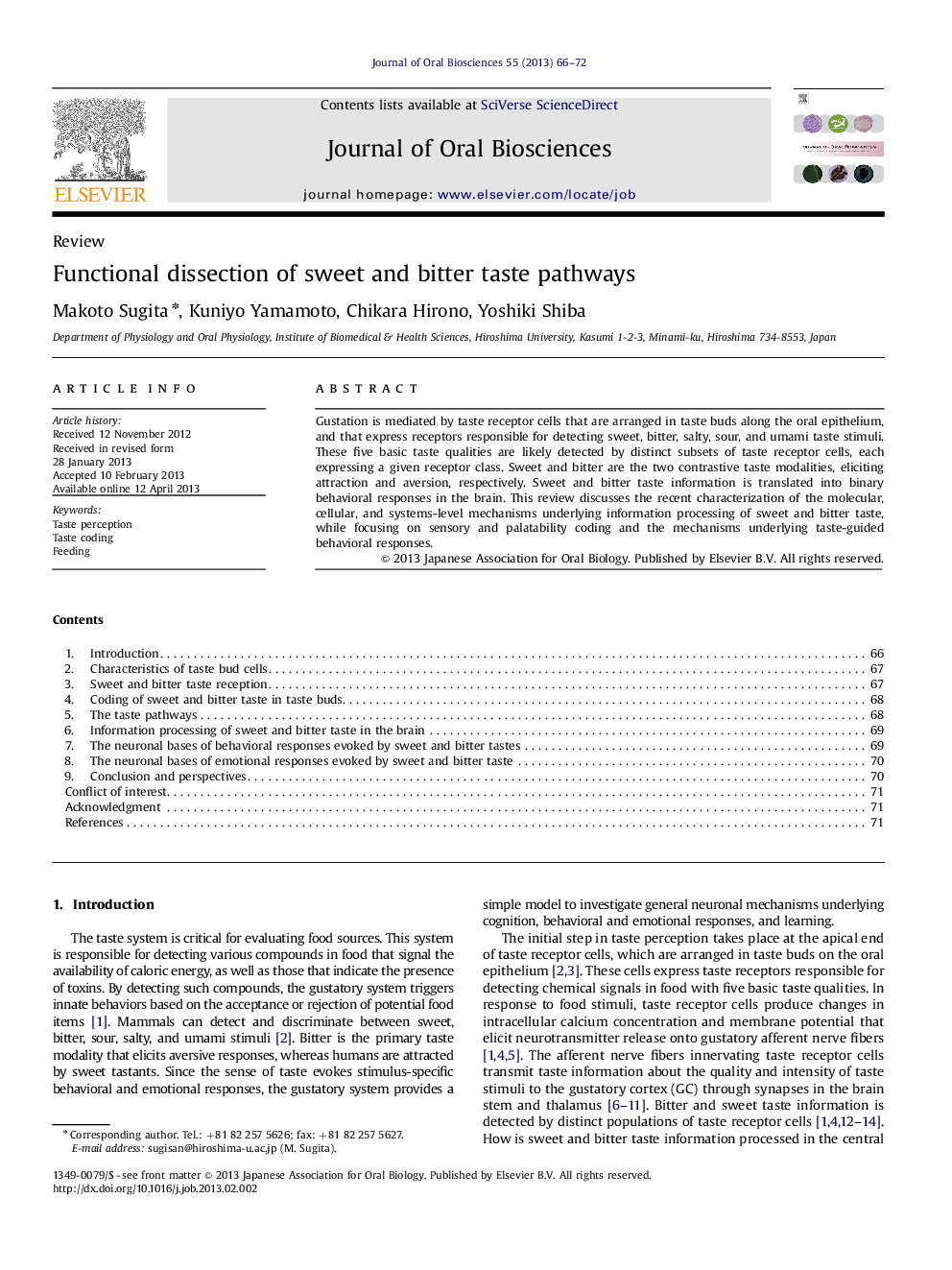| Article ID | Journal | Published Year | Pages | File Type |
|---|---|---|---|---|
| 2776874 | Journal of Oral Biosciences | 2013 | 7 Pages |
Gustation is mediated by taste receptor cells that are arranged in taste buds along the oral epithelium, and that express receptors responsible for detecting sweet, bitter, salty, sour, and umami taste stimuli. These five basic taste qualities are likely detected by distinct subsets of taste receptor cells, each expressing a given receptor class. Sweet and bitter are the two contrastive taste modalities, eliciting attraction and aversion, respectively. Sweet and bitter taste information is translated into binary behavioral responses in the brain. This review discusses the recent characterization of the molecular, cellular, and systems-level mechanisms underlying information processing of sweet and bitter taste, while focusing on sensory and palatability coding and the mechanisms underlying taste-guided behavioral responses.
